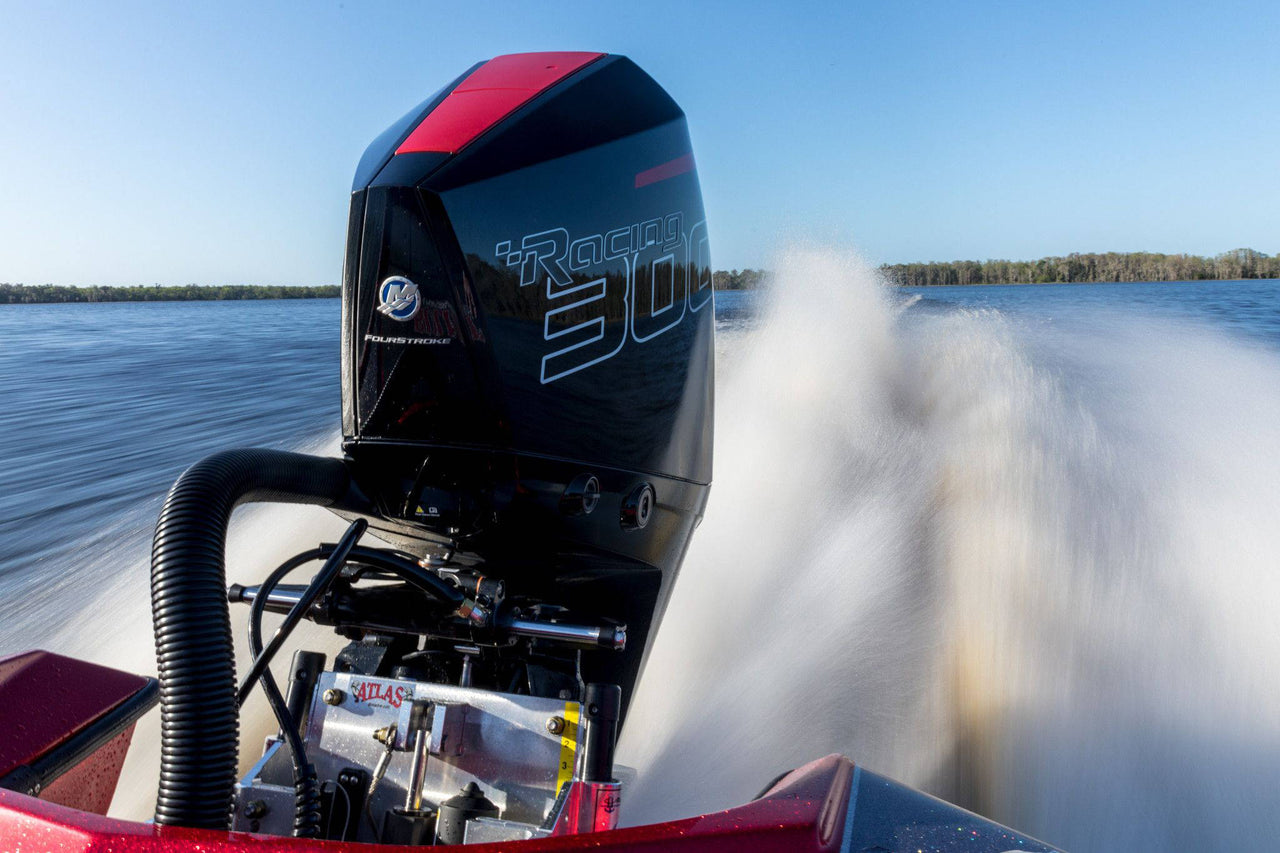Just like anything performance-related or outboard-related, jack plates can seem intimidating, especially if technical details aren’t your thing. The fact is though that you should still be able to enjoy your boat, the water, fishing, and top performance from your outboard even if you’re not a gear head. We’re all about making it more accessible, so in our latest Customer Q&A, we’re answering the top questions we get about jack plates and how to choose a jack for an outboard motor.

Customer Q&A: How Do I Choose a Jack Plate for an Outboard Motor?
Why Do I Need a Jack Plate on My Boat?
Simply put, people started adding jack plates to reduce inefficiencies created between the underside of a motor boat and its propeller. A propeller has to fight to reach peak performance, and jack plates were designed to add distance between the transom and the propeller, thus providing an optimal spot where the propeller fights less and pushes the boat forward more.
Over time, jack plates also came with added benefits for many anglers, like those who fish shallow water. By adding a jack plate, you could go beyond your tilt and trim to get another 6 inches or so of vertical lift, yielding better outboard performance and safer use of your lower unit in skinny water.
What is a Jack Plate Setback?
The setback is the distance from where the jack plate mounts on the boat (the transom) to where it mounts to the motor.
On Luke's boat in the video, he has a 14" jack plate, which is the biggest setback T-H Marine makes. Your boat may not need a 14" setback though, so T-H marine makes a range of setbacks on our jack plates. This range includes 4", 6", 8", 10", and 12" setbacks for both types of jack plates as well as the 14” setback that is only available on hydraulic models.
What Jack Plate Setback Do I Need for My Boat?
In most cases, especially if you're about to order that boat of your dreams, your boat's manufacturer suggests a certain jack plate size. This is because they've got it dialed in and know what performance you'll get. You can reach out to dealers to get that information, but as a general rule, the longer the boat is, the farther back away from that transom you’ll want your outboard to be because you've got a lot more length creating that turbulence.
For a few examples, consider the general guidance below:
For Boats 20’ and Longer: Use a 10” jack plate
For Boats Just Under 20’ Long: Use a 6” or 8” jack plate
* For Boats Under 18’ Long: Use a 4” jack plate
* Although our general guidance suggests 4” jack plates for boats under 18’ long, like small aluminum boats and duck boats, 4” jack plates can also be a great fit for the 17’, 18’, and 19’ inshore boats used for chasing redfish. This is because T-H Marine’s 4” plates are compact, lightweight, and ready for mounting shallow water anchors, just like our bigger plates.
What’s the Difference Between a Manual Jack Plate and a Hydraulic Jack Plate?
Manual jack plates and hydraulic jack plates have the same core purpose, but the difference comes down to adjustability and how you can make those adjustments.
Manual Jack Plates: With manual jack plates like the Z-LOCK Manual Jack Plate, you basically test some heights, set it, and forget it. To put the jack plate in the sweet spot where you need it, you’ll want to take the boat in and out of the water a few times, make some height adjustments, see where it performs best, and lock it in with a wrench.
Hydraulic Jack Plates: This is what you need if you want to be able to adjust your jack plate and tune your performance on the fly. When you have a unit like the Atlas Hydraulic Jack Plate, you can make all these adjustments with the push of a button (or the flick of a lever if you have a FingerFlex Blinker Trim installed).
Height Adjustments: As just one example of why you might do adjust the height settings on your jack plate, there may be more chop on the water one day and more current, so fine tuning your jack plate will help you get the most out of your motor. Then, when you go in shallow water, you can jack it up to help you get on plane quicker, even if you’re only in one foot of water.
Will a Jack Plate Improve My Boat’s Performance?
Yes!
If you're going from having your outboard mounted directly to the transom of your boat, adding any jack plate will improve your outboard's performance big time. You'll see a definite increase in top end speed and you’re likely to see plenty of other benefits, too.
You'll also see a big difference when going from a manual jack plate to a hydraulic one. Being able to fine-tune will give you peak performance every time you're on the water.
Where Can I Buy a Jack Plate for My Outboard Motor?
T-H Marine is known as the top jack plate manufacturer in the marine industry and we take pride in backing up that reputation with quality, innovation, and ease of use. We’re incredibly thankful for the demand that’s built over the years, and proud to make our plates available through a wide variety of channels. This includes just about every boat manufacturer and dealer out there, as well as offering them on our website and a variety of others.
Beyond those factors built into the product itself, we’re also happy to provide the information you need to find the best jack plate for your outboard motor. If you’re ready to shop jack plates, you can hit the link below, but if you have a jack plate question that wasn’t answered in this guide, we welcome you to write with your questions, too!






